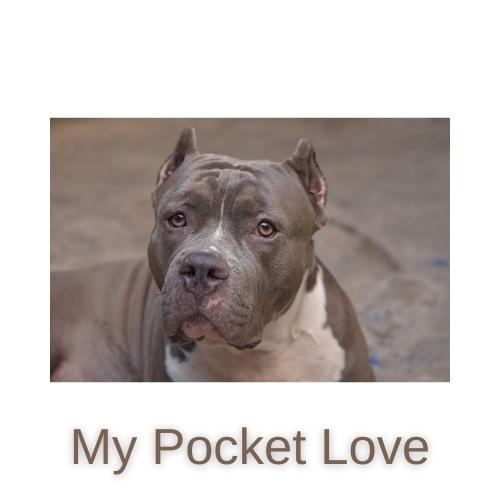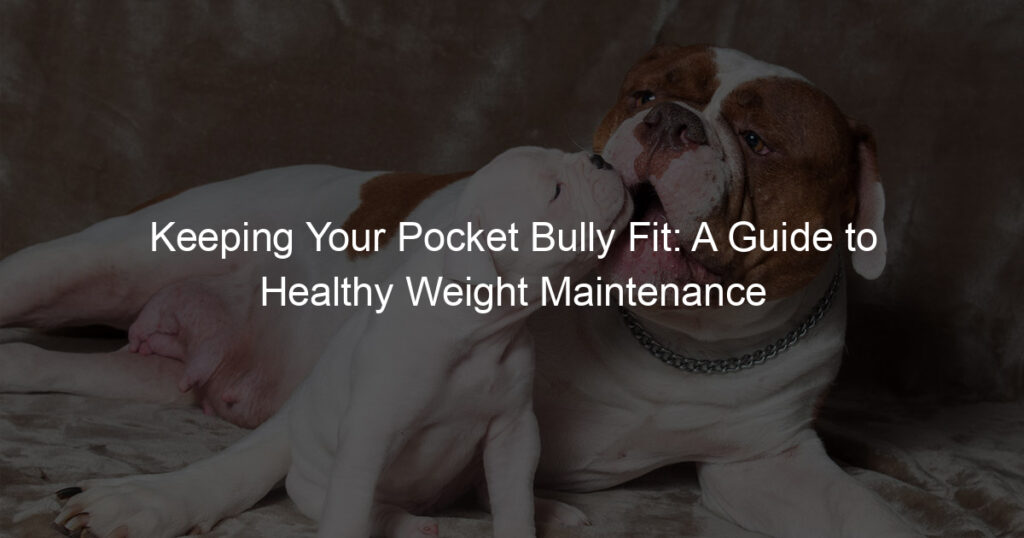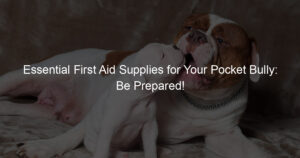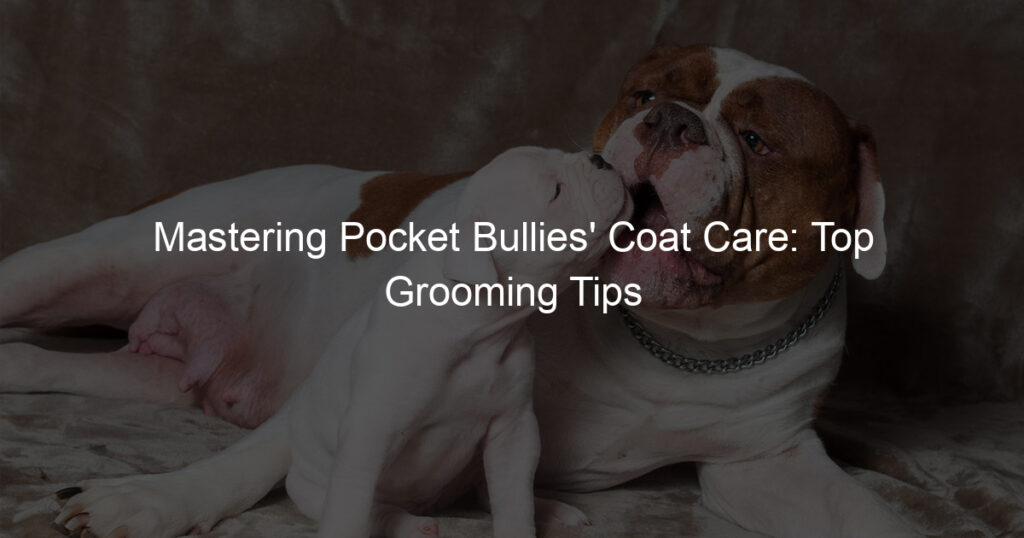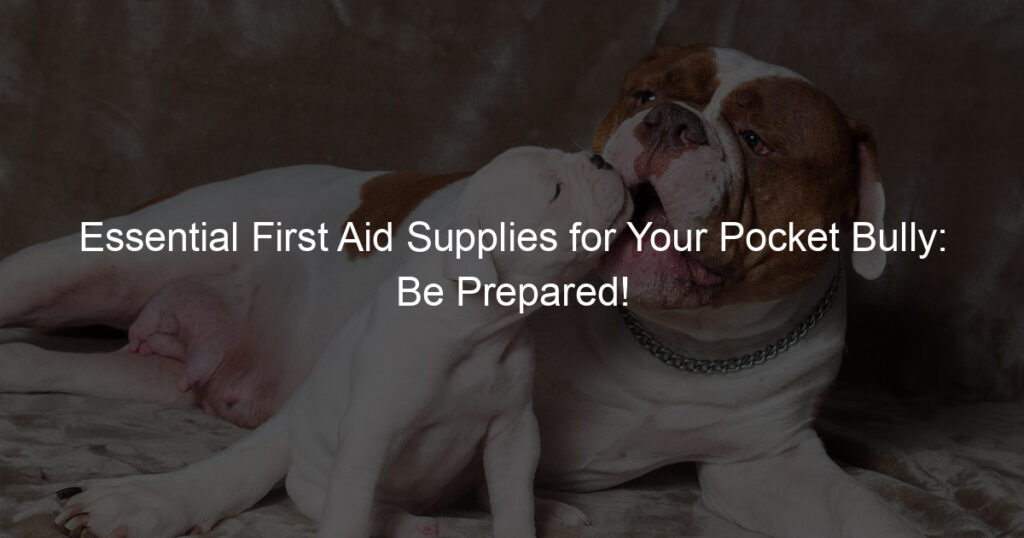
Introduction to Pocket Bullies
When it comes to unique dog breeds, Pocket Bullies certainly stand out. They are a compact and muscular breed, known for their friendly temperament and distinctive appearance. But what exactly is a Pocket Bully, and what do potential owners need to know about this breed?
- Understanding the breed
- Common health concerns in Pocket Bullies
Despite their tough exterior, Pocket Bullies are known for their affectionate and loyal nature. They are a type of American Bully, a breed that was developed in the 1980s and 1990s with the aim of creating a family-friendly dog with the physical characteristics of the American Pit Bull Terrier and the American Staffordshire Terrier.
As the name suggests, Pocket Bullies are the smallest of the American Bully breed, typically standing between 12 and 16 inches tall. They have a compact, muscular body, a broad head, and a short coat that comes in a variety of colors.
Despite their small size, Pocket Bullies are strong and energetic dogs that require regular exercise to keep them healthy and happy. They are also intelligent and eager to please, which makes them relatively easy to train.
Like all breeds, Pocket Bullies can be prone to certain health issues. Some of the most common include hip and elbow dysplasia, heart disease, and skin allergies. It’s important for potential owners to be aware of these issues and to ensure their Pocket Bully receives regular veterinary check-ups.
Hip and elbow dysplasia are conditions that affect the joints and can lead to discomfort and mobility issues. Heart disease can also be a concern, particularly as the breed ages. Skin allergies can cause discomfort and itching, and may require dietary adjustments or medication.
Despite these potential health concerns, with proper care and regular veterinary check-ups, Pocket Bullies can lead healthy, happy lives. They are a resilient breed, known for their longevity and robust health.
Pocket Bullies Diet
One of the most important aspects of caring for your Pocket Bully is ensuring they have a proper diet. This not only keeps them healthy but also contributes to their overall well-being.
Understanding Nutrition for Pocket Bullies
Understanding the nutritional needs of your Pocket Bully is crucial for their health. This involves knowing the importance of a balanced diet and the essential nutrients they need.
- Importance of a balanced diet
- Essential nutrients for Pocket Bullies
- Protein: This is essential for muscle development and repair. It also helps in the production of hormones and enzymes.
- Fats: Fats provide energy and help in the absorption of vitamins. They also contribute to a healthy coat and skin.
- Carbohydrates: These provide energy and help with digestion.
- Vitamins and Minerals: These are necessary for various bodily functions such as bone development, immune system support, and blood clotting.
A balanced diet is vital for your Pocket Bully’s health. It helps maintain their weight, keeps their coat shiny, and supports their overall health. A balanced diet includes a mix of proteins, carbohydrates, fats, vitamins, and minerals. Remember, too much of anything is not good. Therefore, balance is key.
There are several nutrients that your Pocket Bully needs to stay healthy. These include:
It’s important to note that the specific amounts of these nutrients your Pocket Bully needs can vary based on their age, size, and activity level. Therefore, it’s best to consult with a vet to create a diet plan that suits your pet’s needs.
Feeding Pocket Bullies
Feeding your Pocket Bully is an essential part of their overall health and well-being. It’s more than just providing food; it’s about choosing the right food and maintaining a proper feeding schedule. Let’s dive into these two important aspects:
- Choosing the Right Dog Food
Choosing the right food for your Pocket Bully is crucial. The food should be high in protein, low in grains, and contain a balanced amount of fruits and vegetables. This combination ensures your dog gets all the necessary nutrients.
Remember, not all dog foods are created equal. Some brands use fillers and artificial ingredients that can harm your dog’s health. Always read the label and choose a brand that uses natural ingredients.
Here’s a simple table to help you understand what to look for in dog food:
| Ingredient | Why It’s Important |
|---|---|
| Protein | Builds strong muscles and provides energy |
| Fruits and Vegetables | Provides vitamins and minerals for overall health |
| No Artificial Ingredients | Prevents allergies and other health issues |
- Feeding Schedule and Portion Control
Once you’ve chosen the right food, the next step is to establish a feeding schedule and control the portions. Pocket Bullies are prone to obesity, so portion control is crucial.
A typical adult Pocket Bully should be fed twice a day – once in the morning and once in the evening. The exact amount will depend on their weight, age, and activity level. As a general rule, an adult Pocket Bully should eat about 1.5 to 2.5 cups of high-quality dry dog food each day, divided into two meals.
Remember, these are just guidelines. Always consult with your vet to determine the best feeding schedule and portion size for your Pocket Bully.
Feeding your Pocket Bully correctly will not only keep them healthy but also happy. It’s one of the best ways to show your love and care for your furry friend.
Maintaining Healthy Weight in Pocket Bullies
Maintaining a healthy weight in your Pocket Bully is crucial to their overall health and well-being. It’s not just about how much they eat, but also about the quality of their diet and their level of physical activity. Let’s delve into the specifics of Pocket Bullies weight management.
Pocket Bullies Weight Management
Weight management in Pocket Bullies involves two key aspects: identifying a healthy weight for your pet and monitoring it regularly. Let’s explore these two points in more detail.
- Identifying a healthy weight for your Pocket Bully
- Monitoring your Pocket Bully’s weight
The ideal weight for a Pocket Bully varies based on factors such as age, sex, and overall health. Generally, a healthy adult Pocket Bully should weigh between 30 to 40 pounds. Puppies and older dogs may weigh less. It’s best to consult with your vet to determine the optimal weight for your specific pet.
Regular weight checks are essential to ensure your Pocket Bully maintains a healthy weight. You can do this at home using a pet scale or during regular vet visits. If you notice any sudden weight changes, it’s important to consult your vet as it could indicate a health issue.
Remember, a healthy weight contributes to a longer, happier life for your Pocket Bully. It can prevent health issues such as heart disease, diabetes, and joint problems. So, make sure to keep a close eye on your pet’s weight and consult your vet regularly.
Pocket Bullies Weight Control
Managing your Pocket Bully’s weight is crucial for their overall health and well-being. Whether your furry friend needs to shed a few pounds or gain some, we have some tips to help you.
- Weight loss tips for overweight Pocket Bullies
- Reduce Calorie Intake: Consult with your vet to determine the appropriate amount of food your Pocket Bully should be consuming daily.
- Regular Exercise: Daily walks and playtime can help burn off excess calories and keep your Pocket Bully active and healthy.
- Healthy Treats: Instead of high-calorie treats, opt for healthier alternatives like carrots or apples.
- Weight gain tips for underweight Pocket Bullies
- Increase Calorie Intake: Consult with your vet to determine the appropriate amount of food your Pocket Bully should be consuming daily. They may recommend a high-calorie diet to help your dog gain weight.
- Regular Meals: Instead of two large meals, consider feeding your Pocket Bully smaller meals throughout the day to help them gain weight.
- High-Quality Food: Ensure your Pocket Bully is eating high-quality dog food that is rich in protein and healthy fats.
If your Pocket Bully is overweight, it’s essential to help them lose weight in a healthy and gradual manner. Here are some tips:
If your Pocket Bully is underweight, it’s important to help them gain weight in a healthy and gradual manner. Here are some tips:
| Weight Loss | Weight Gain | |
|---|---|---|
| Calorie Intake | Reduce | Increase |
| Exercise | Regular | Regular |
| Treats/Food | Healthy Treats | High-Quality Food |
Remember, every Pocket Bully is unique and what works for one may not work for another. Always consult with your vet before making any significant changes to your Pocket Bully’s diet or exercise routine.
Pocket Bullies Exercise
Exercise is a vital part of any dog’s life, and Pocket Bullies are no exception. Regular physical activity helps to keep your Pocket Bully healthy, happy, and well-behaved. Let’s delve into the importance of regular exercise for these compact and muscular dogs, and explore some recommended exercises for them.
Importance of Regular Exercise
- Physical Health: Regular exercise helps to maintain a healthy weight in Pocket Bullies, reducing their risk of obesity and associated health problems. It also promotes good cardiovascular health and helps to keep their muscles strong and flexible.
- Mental Health: Exercise is not just about physical health. It also plays a crucial role in your Pocket Bully’s mental well-being. Regular physical activity helps to prevent boredom and associated behavioral problems. It can also reduce anxiety and improve your dog’s overall mood.
- Behavioral Benefits: Regular exercise can help to curb problematic behaviors in Pocket Bullies. It provides an outlet for their energy and can help to reduce excessive barking, chewing, and digging.
Recommended Exercises for Pocket Bullies
- Walking: A daily walk is a great exercise for Pocket Bullies. It not only provides physical exercise but also mental stimulation from the different sights, sounds, and smells they encounter.
- Fetch: Playing fetch is a fun way to get your Pocket Bully moving. It can be played in the backyard or at the park, and it also helps to strengthen the bond between you and your dog.
- Tug of War: This game is not only a good physical workout but also a mental challenge for your Pocket Bully. It’s important to let your dog win sometimes to keep them interested in the game.
- Agility Training: Agility training can be a fun and challenging exercise for Pocket Bullies. It involves them navigating through a course of obstacles, which can help to improve their coordination and confidence.
Remember, the key to a healthy and happy Pocket Bully is a balanced diet, regular exercise, and lots of love and attention. Always consult with your vet before starting a new exercise routine for your dog.
Pocket Bullies Health Tips
When it comes to maintaining the health of your Pocket Bully, there are several important factors to consider. One of the most crucial is ensuring regular vet check-ups. Let’s delve into why these visits are so important and what they typically involve.
Regular Vet Check-ups
Regular vet check-ups are essential for keeping your Pocket Bully in the best possible health. They not only help to prevent illness but also ensure that any potential health issues are detected early. Let’s look at why these visits are so important and what they typically involve.
- Importance of regular vet visits
- Common tests and vaccinations for Pocket Bullies
Regular vet visits are a key part of maintaining your Pocket Bully’s health. These check-ups allow your vet to monitor your pet’s overall health and detect any potential issues early. Early detection is crucial as it often leads to more effective treatment and a better prognosis. Regular vet visits also provide an opportunity for your pet to receive necessary vaccinations and preventative treatments.
During a typical vet visit, your Pocket Bully may undergo a variety of tests. These can include blood tests, urine tests, and fecal tests, which can help detect conditions such as diabetes, kidney disease, and intestinal parasites. Your vet may also perform a physical examination to check for any abnormalities.
Vaccinations are another crucial part of a vet visit. Pocket Bullies, like all dogs, need to be vaccinated against a variety of diseases, including rabies, distemper, and parvovirus. Your vet can provide a vaccination schedule tailored to your pet’s specific needs.
Remember, your Pocket Bully’s health is in your hands. Regular vet visits, along with a balanced diet and regular exercise, can help ensure your pet lives a long, healthy, and happy life.
Mental Health and Well-being
Just like humans, Pocket Bullies also have mental health needs that must be met for them to live a happy and fulfilled life. Understanding these needs and how to maintain their well-being is crucial for any Pocket Bully owner.
- Understanding your Pocket Bully’s mental health needs
Pocket Bullies are intelligent and active dogs. They need mental stimulation just as much as they need physical exercise. Without it, they can become bored and destructive. Mental health in Pocket Bullies can be maintained by providing them with plenty of toys, training, and social interaction.
It’s also important to note that Pocket Bullies can suffer from separation anxiety. This can lead to destructive behavior and other health issues. Therefore, it’s crucial to spend quality time with your Pocket Bully and ensure they are not left alone for extended periods.
- Tips for maintaining a happy and healthy Pocket Bully
Here are some tips to help maintain your Pocket Bully’s mental health:
- Provide plenty of toys: Toys not only keep your Pocket Bully entertained but also provide mental stimulation. Puzzle toys are a great choice as they challenge your dog’s mind.
- Regular training: Training sessions are a great way to stimulate your Pocket Bully’s mind. They also help to strengthen the bond between you and your dog.
- Social interaction: Socializing your Pocket Bully with other dogs and people can help to improve their mental health. It provides them with the opportunity to learn and adapt to different situations.
- Quality time: Spending quality time with your Pocket Bully can help to reduce their anxiety and improve their overall mental health. This can include playing games, going for walks, or simply cuddling on the couch.
By understanding and addressing your Pocket Bully’s mental health needs, you can ensure they live a happy and healthy life. Remember, a mentally healthy Pocket Bully is a happy Pocket Bully!
Conclusion: The Key to Your Pocket Bully’s Health
As we reach the end of our discussion, it’s important to summarize the key points we’ve covered and share some final thoughts on maintaining a healthy Pocket Bully. The health of your furry friend is in your hands, and with the right knowledge and care, you can ensure they lead a happy and healthy life.
- Summary of key points:
- Final thoughts on maintaining a healthy Pocket Bully:
Firstly, we learned that a balanced diet is crucial for your Pocket Bully’s health. This includes a mix of proteins, vegetables, and grains, with a focus on high-quality dog food. Secondly, maintaining a healthy weight is vital. Regular check-ups and monitoring your dog’s weight can prevent obesity and related health issues. Thirdly, exercise plays a significant role in your Pocket Bully’s health. Regular walks, playtime, and mental stimulation can keep your dog fit and happy. Lastly, we discussed various health tips, like regular vet visits, dental hygiene, and grooming.
Remember, every Pocket Bully is unique and what works for one may not work for another. It’s important to understand your dog’s specific needs and adjust their diet, exercise, and care accordingly. Regular vet visits and your attention to their behavior can go a long way in ensuring their health. After all, a healthy dog is a happy dog!
By following these guidelines, you are not just ensuring your Pocket Bully’s health, but also strengthening your bond with them. Here’s to many more years of companionship and love with your Pocket Bully!
